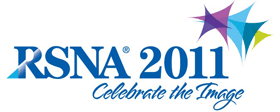
Abstract Archives of the RSNA, 2011
Jun Kondo, Presenter: Nothing to Disclose
Naoki Kamiya PhD, Abstract Co-Author: Nothing to Disclose
Hiroki Osaki, Abstract Co-Author: Nothing to Disclose
Takeshi Hara PhD, Abstract Co-Author: Nothing to Disclose
Chisako Muramatsu PhD, Abstract Co-Author: Nothing to Disclose
Hiroshi Fujita PhD, Abstract Co-Author: Research grant, Hitachi, Ltd
Xiangrong Zhou PhD, Abstract Co-Author: Nothing to Disclose
We developed interactive system for next-generation medical care system based on the collaboration technique with iPad and Kinect. We can achieve an interactive and real-time viewing technique with CAD for the atechnic patient about anatomy.
The necessity of the computer-aided diagnosis (CAD) system is highly recognized. However, the today's CAD systems are often limited to target doctors; the direct benefit for patient is fewer. Therefore, in this study intended to achieve more effective informed consent by the active participation of the patient. Currently, diagnosis of medical images is performed on film or the monitor, patients with poor knowledge of anatomy is very difficult to understand the spatial position of the body response to that image. In this proposed method, we get the positional information on the patient’s body using the Kinect dynamically. Then, the real time and interactive matching with the image on the iPad which manipulate by the patient and original CT image is achieved.
In this study, we established next-generation medical examination room by environmental sensors using Kinect. Then, as for the present system, we developed the display system for CT image and CAD results on the tablet device using iPad. In our system, the patient tilts the iPad to operate intuitively. Therefore, this method detected the tilt and height of the iPad, and calculates the correspondence of the CT slice using the Kinect sensor using the bone tracking method. Finally, the evaluation of the proposed method for the technical aspects was performed by the observer test. Additionally, usability test was conducted for a person who has general knowledge of anatomy.
We applied the proposed method to the 20 cases of clinical CT image. We could achieve an interactive and real-time viewing for the CT image on the iPad which operated by the patient. By introducing this system for many patients with variable background, allowing for the patients understanding of own diagnosis. However, it is necessary to examine the relationship between the computational results and visual assessment for the large datasets.
Kondo, J,
Kamiya, N,
Osaki, H,
Hara, T,
Muramatsu, C,
Fujita, H,
Zhou, X,
Interactive System for Next-Generation Medical Care System Using iPad and Kinect. Radiological Society of North America 2011 Scientific Assembly and Annual Meeting, November 26 - December 2, 2011 ,Chicago IL.
http://archive.rsna.org/2011/11005942.html

